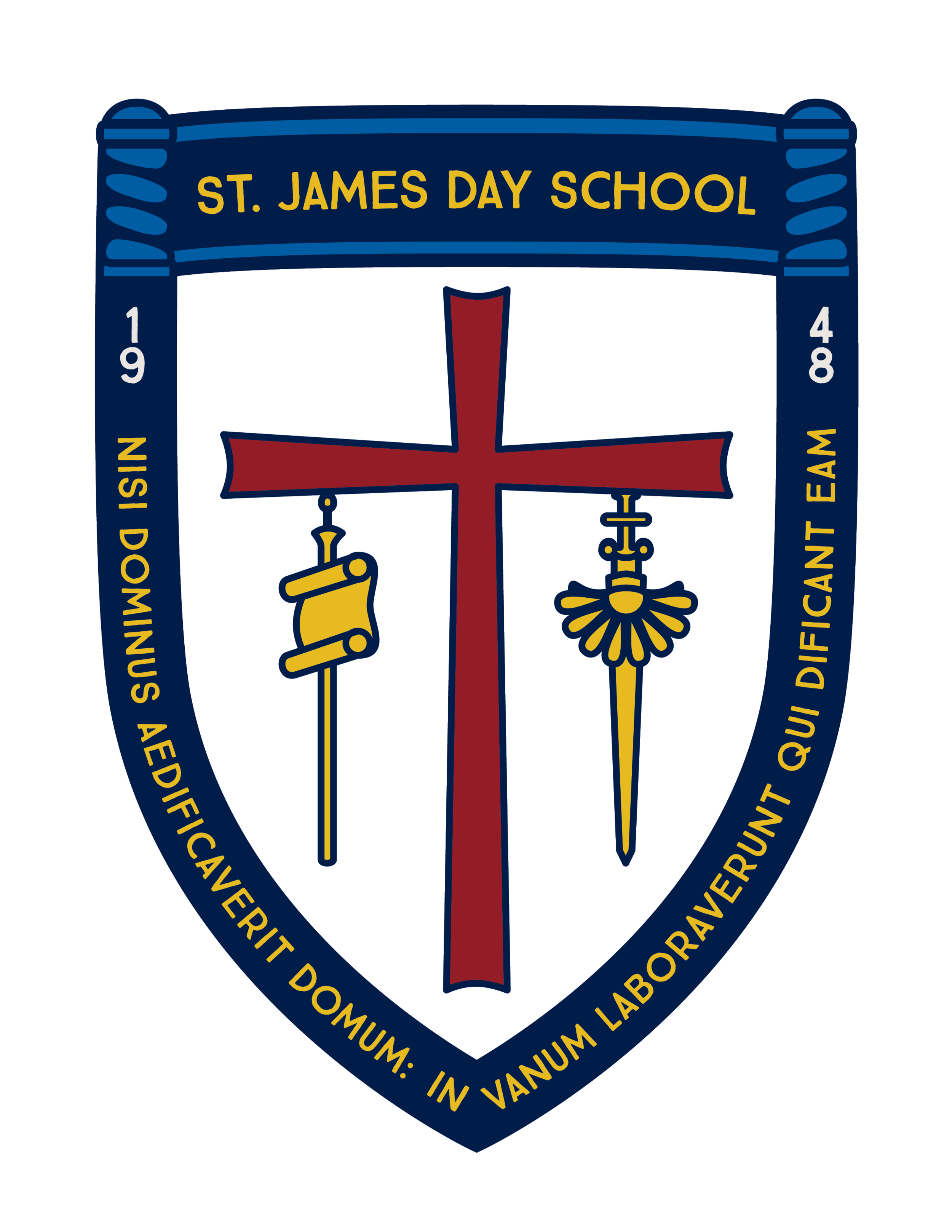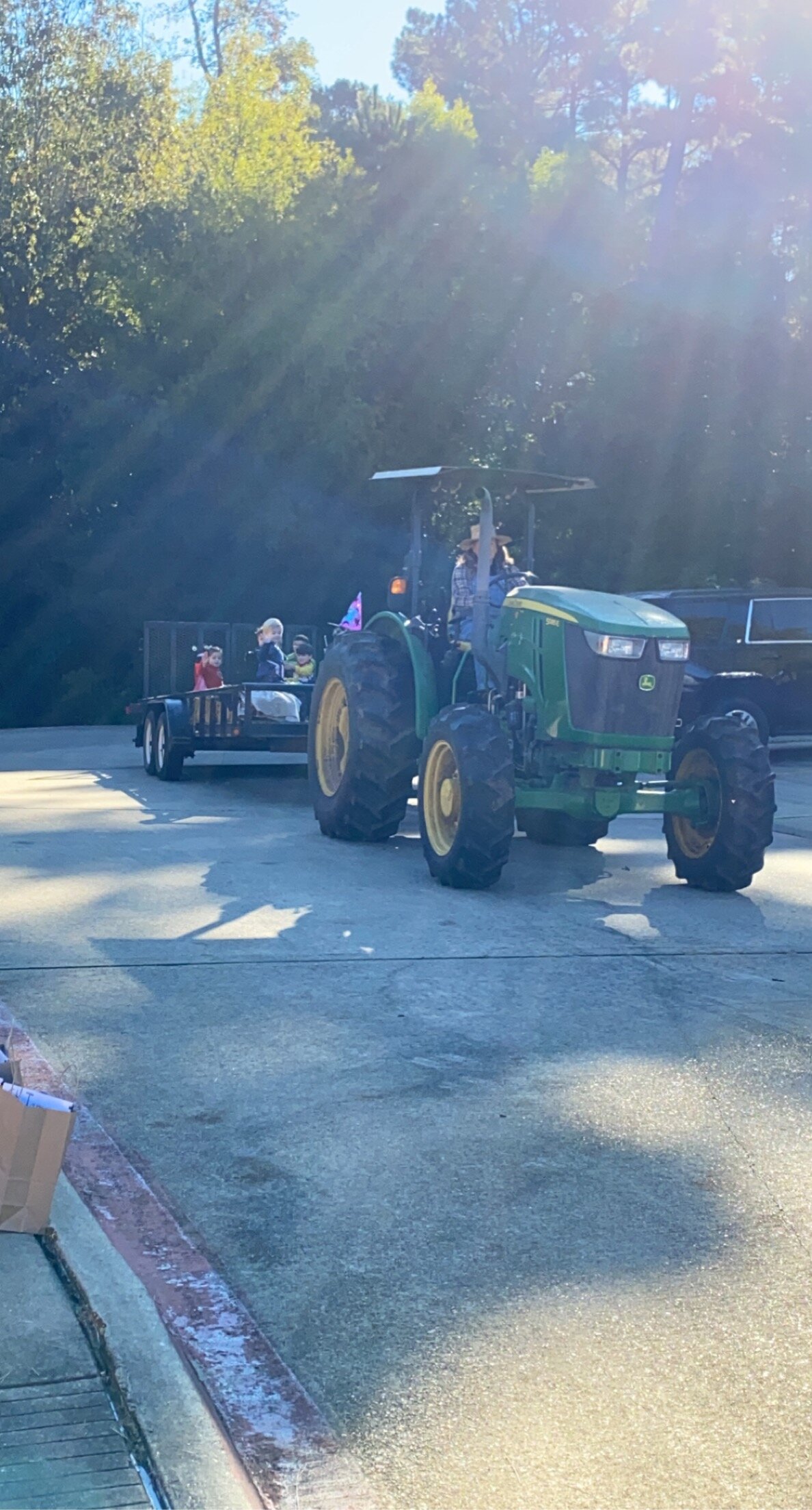by Susie Rogers and Nicole Ayers, 7th and 8th Grade Homeroom Teachers
We may be a small school, but we do BIG things on campus! When our pre-school’s annual pumpkin patch field trip was canceled, the middle school students decided to step up and provide the experience themselves. First, they brainstormed, researched, and devised a plan to build and plant a pumpkin patch. They built a set of four raised beds and planted two types of pumpkin seeds: Small Sugar and Mammoth Gold. Students cared for their plants from seed, to sprout, to flowering vine. At first, the flowers were withering without developing into fruit, so the students researched and learned about hand-pollination. Thankfully, area bees found their garden and took over the task, and yellow or green pumpkins started developing left and right. It was so exciting to watch the pumpkins grow!
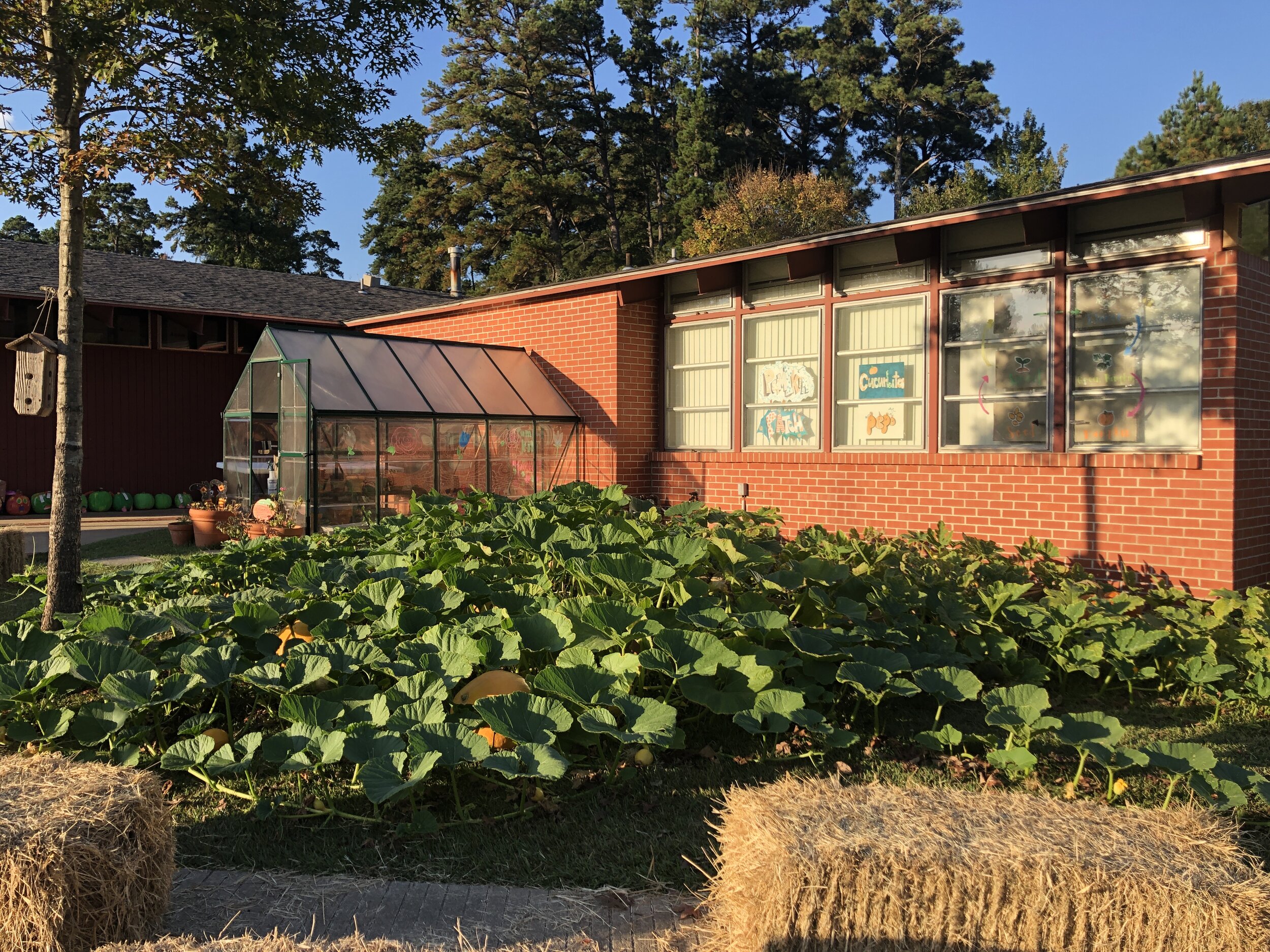
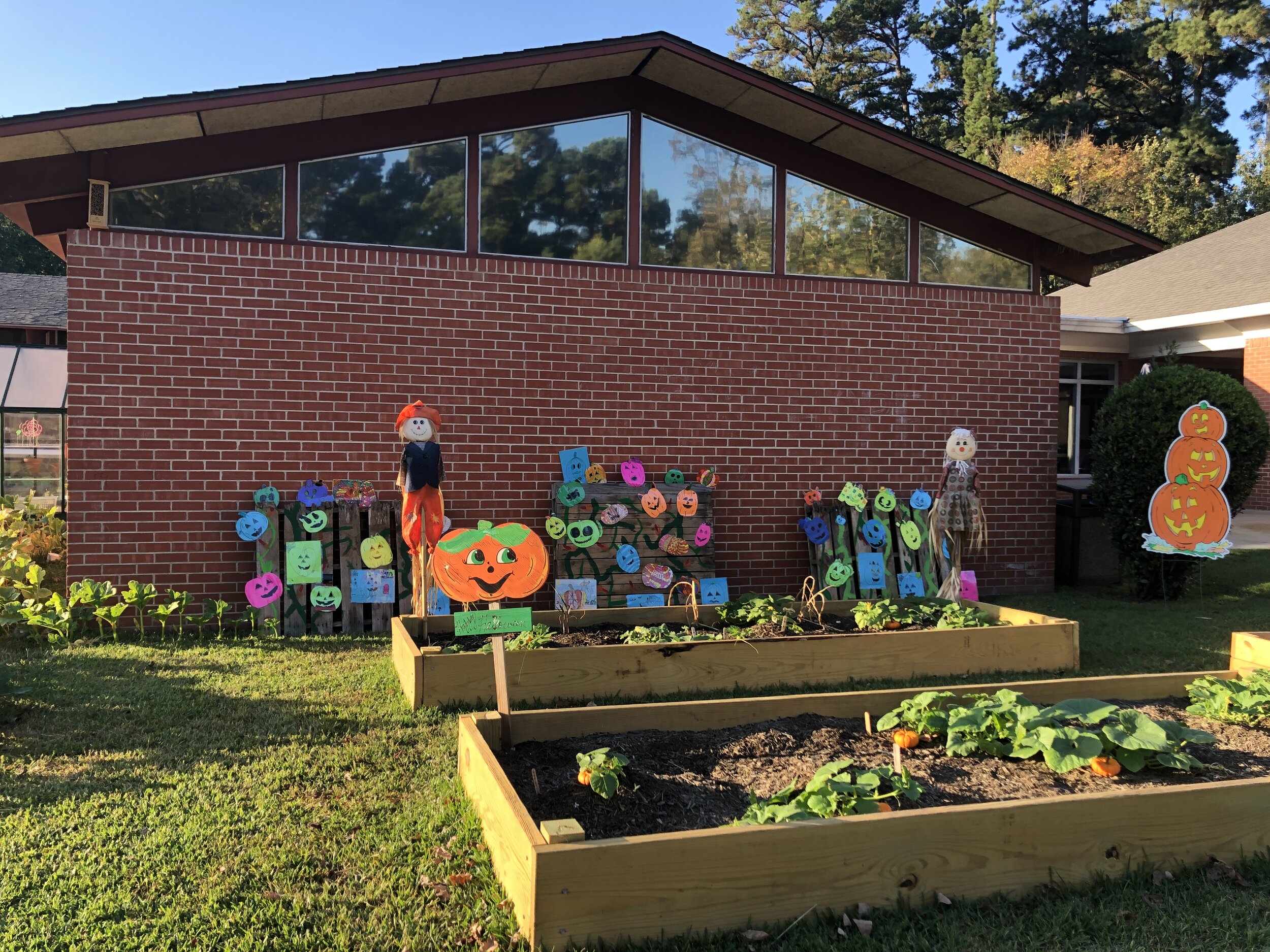
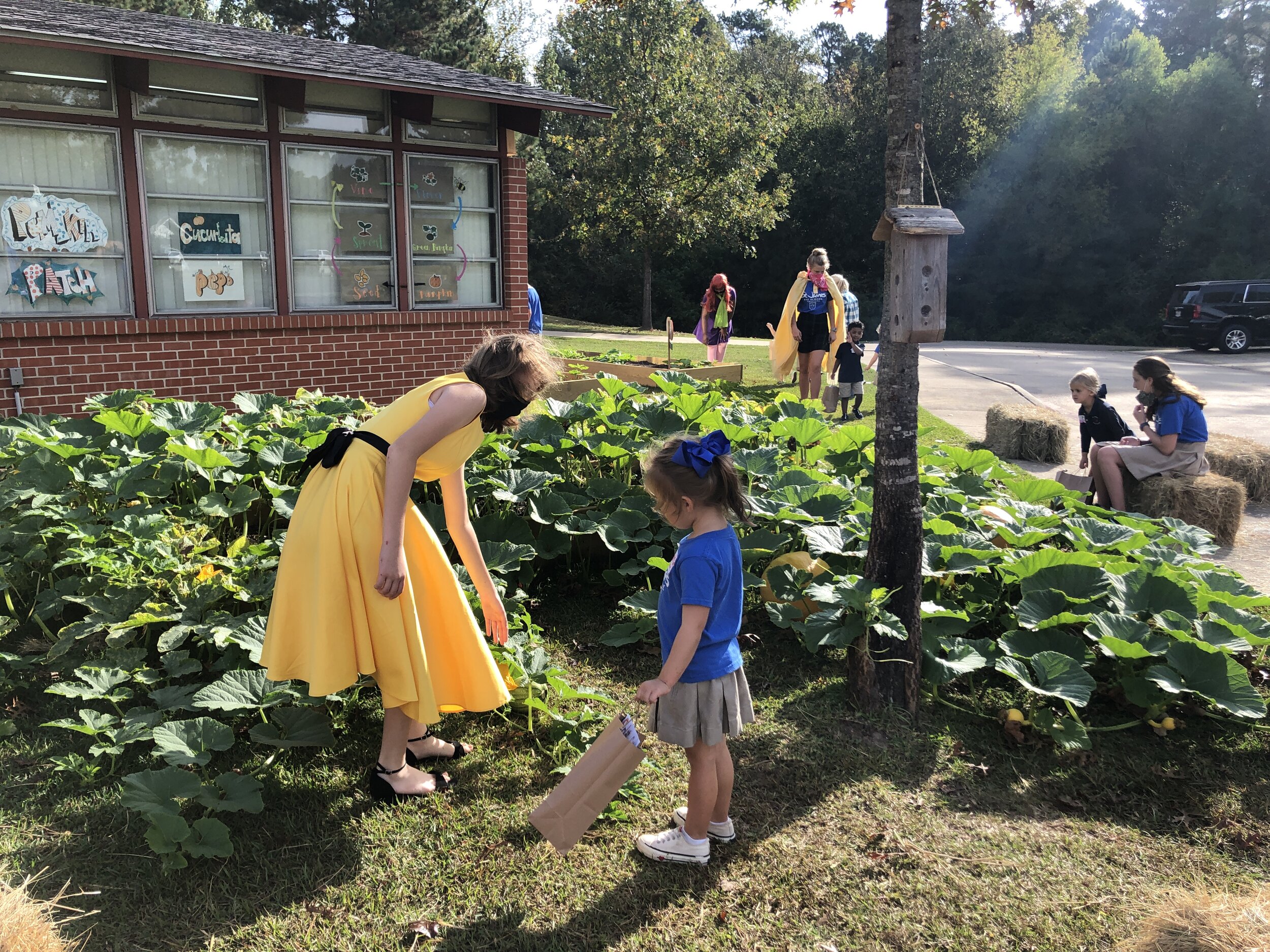
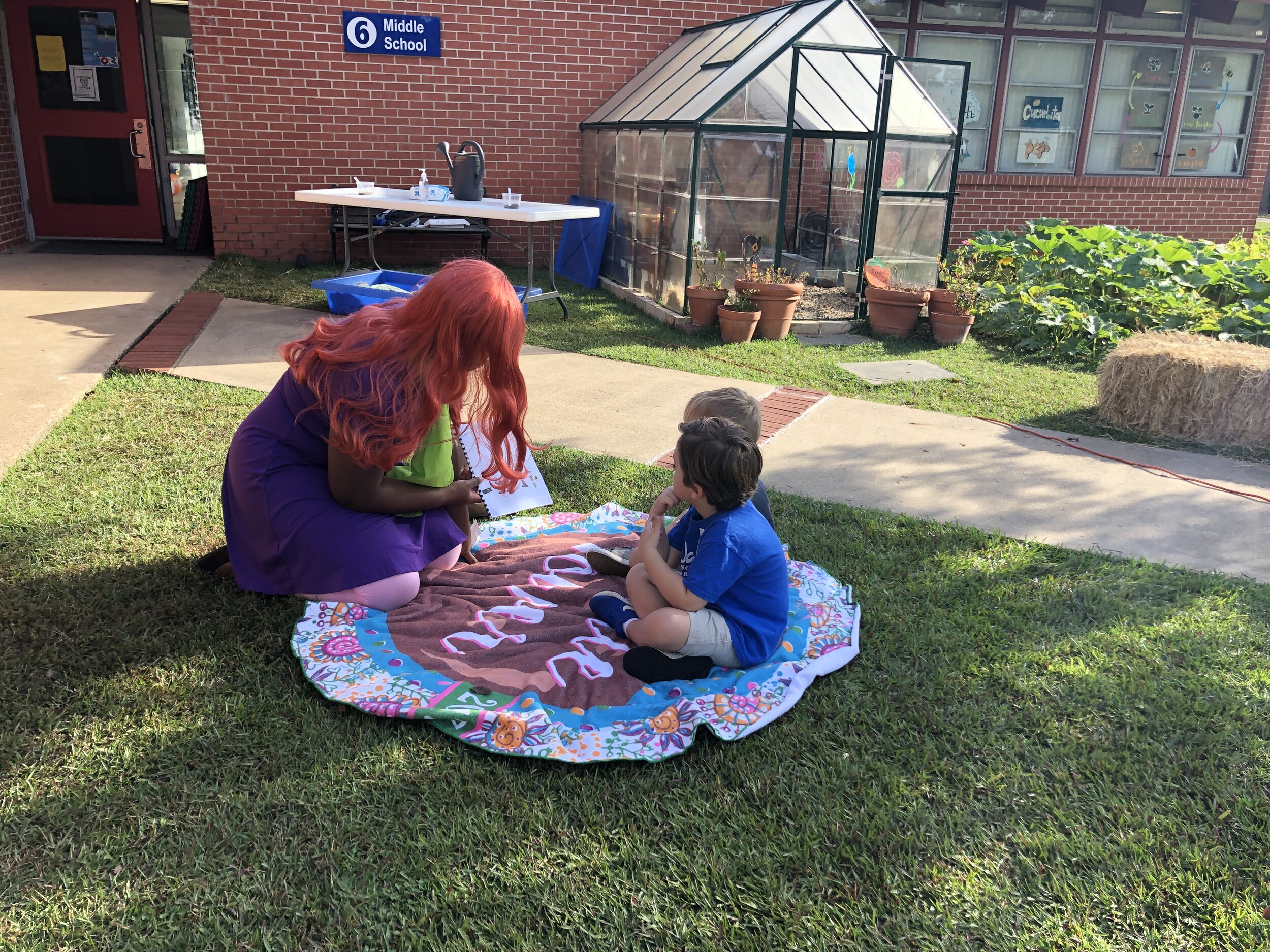
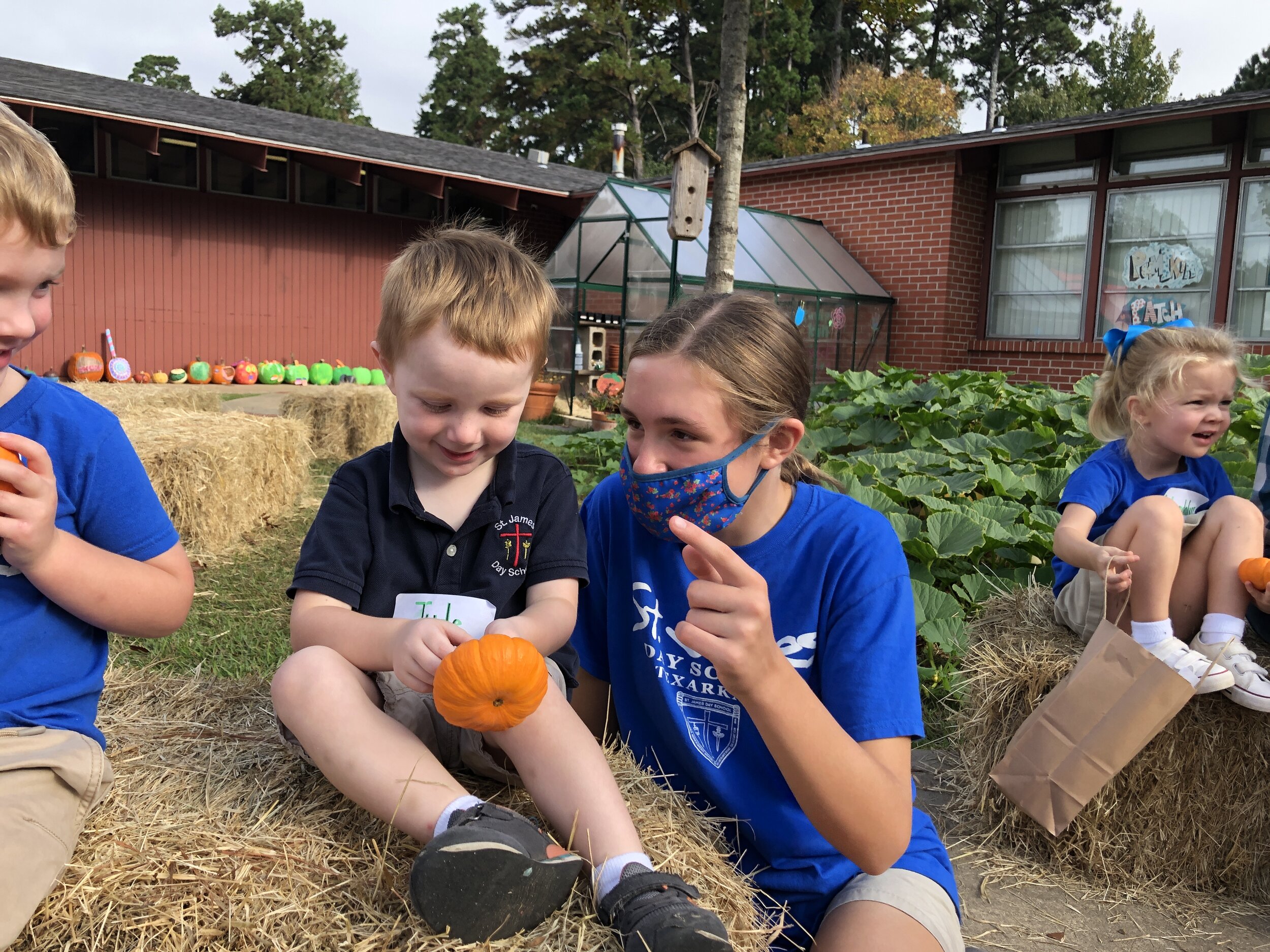
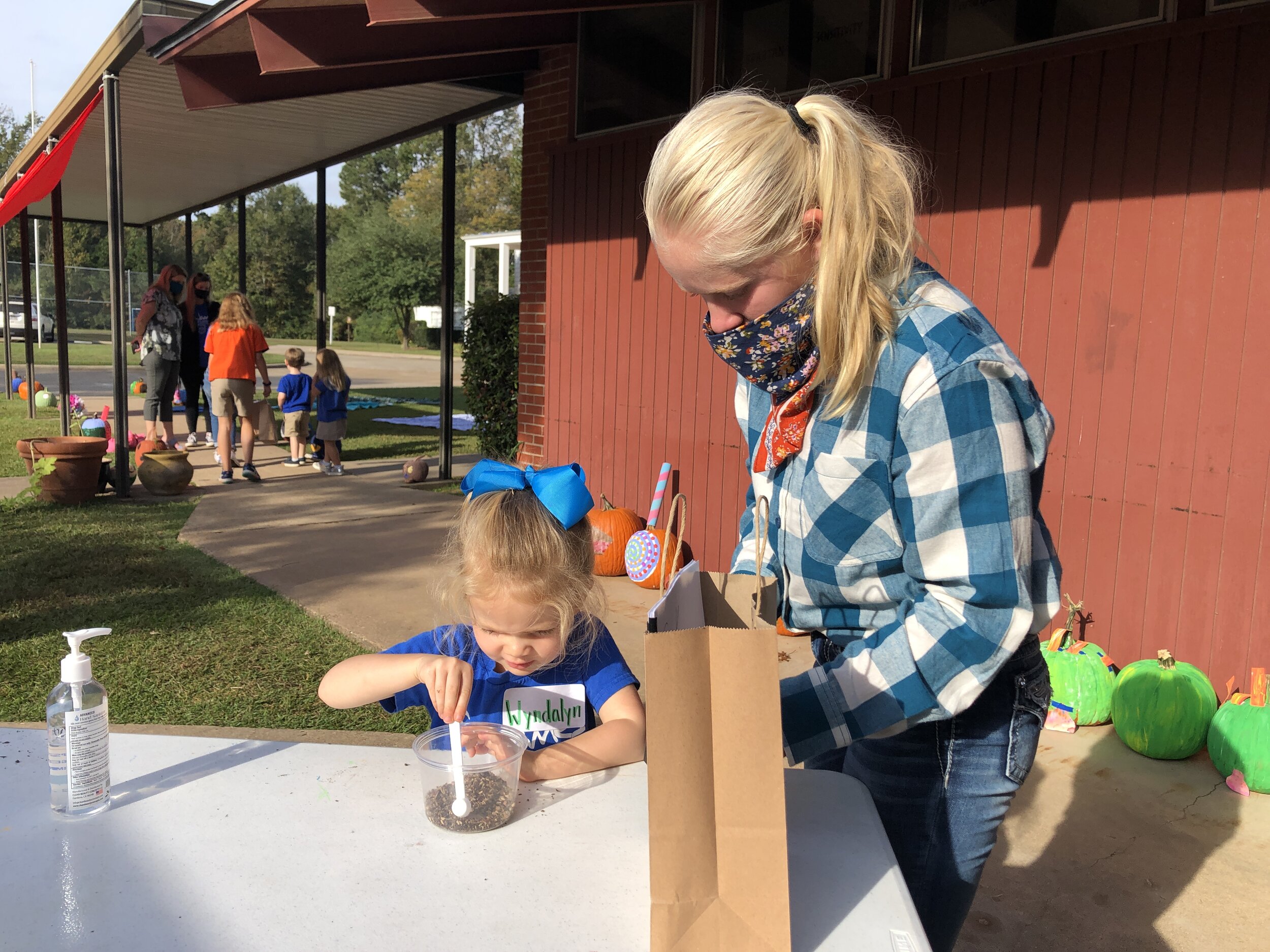
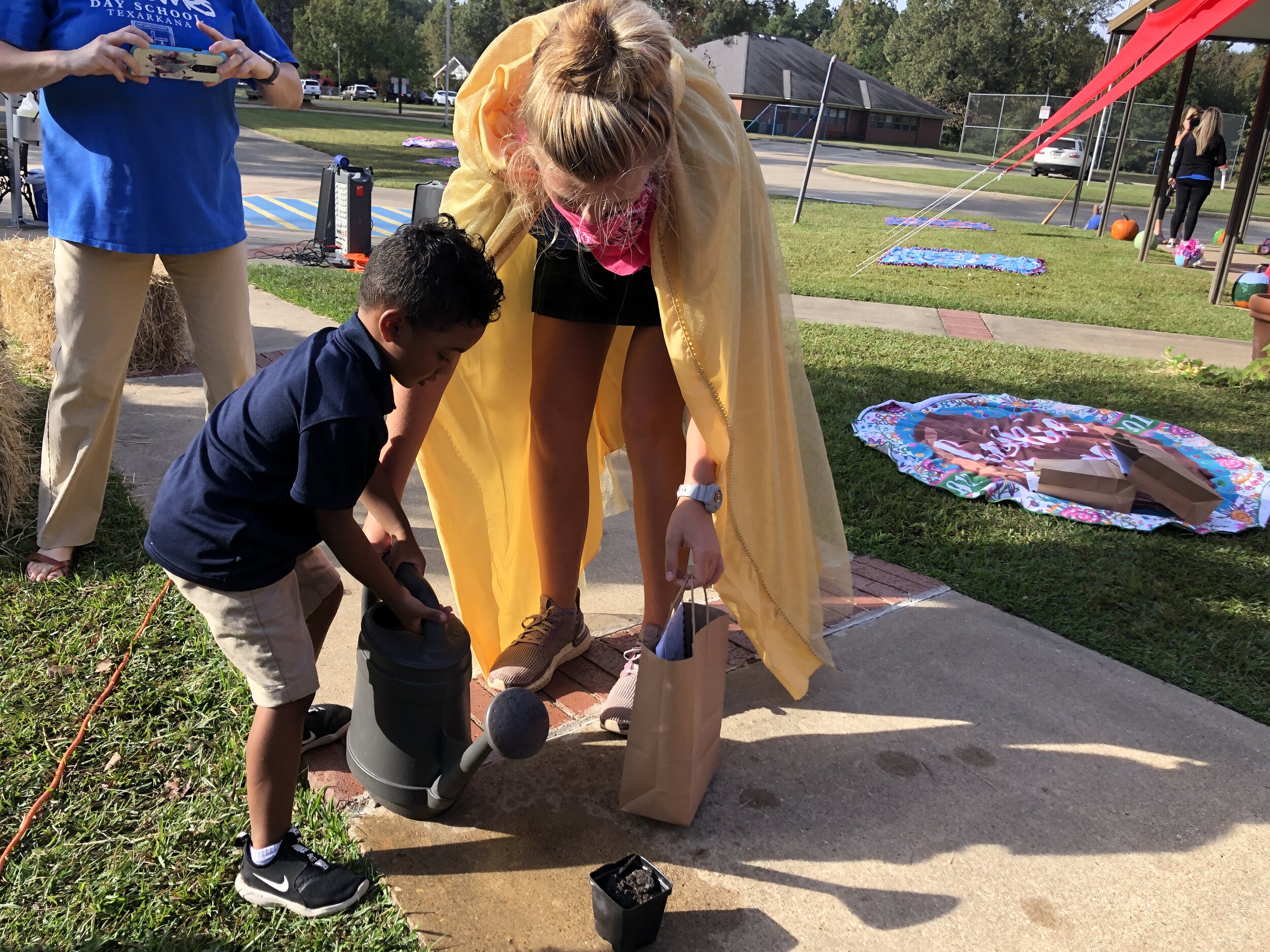
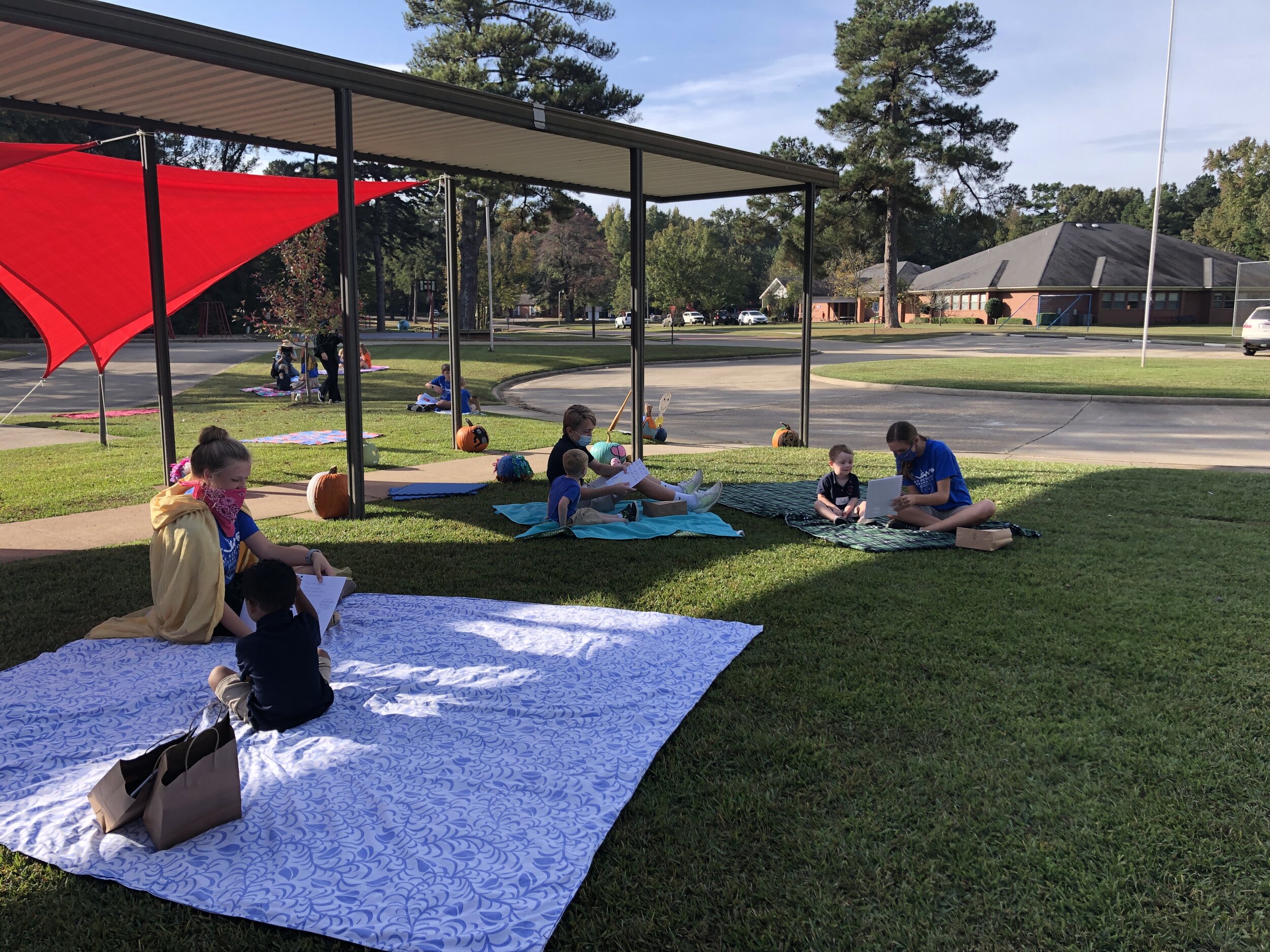
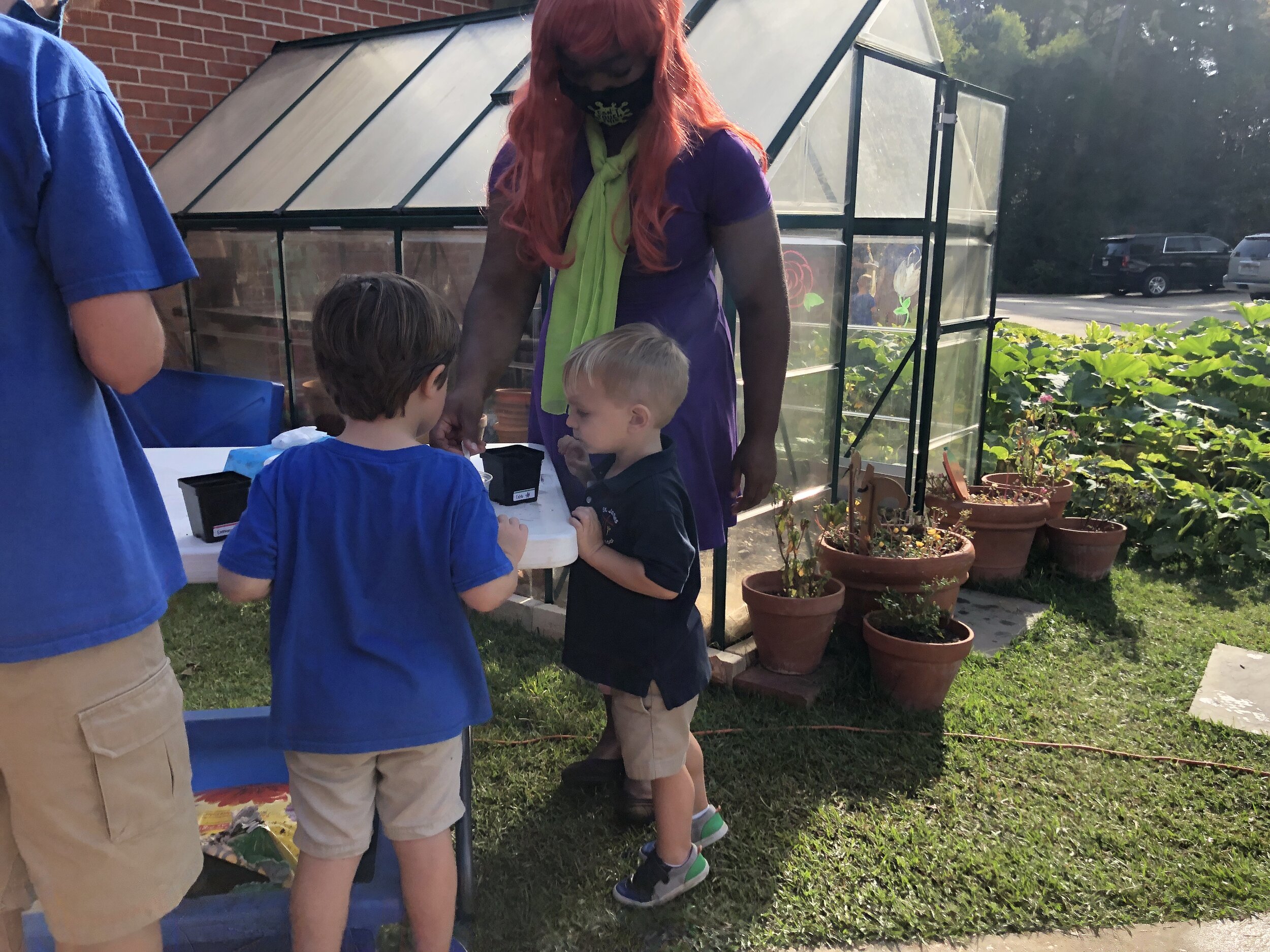
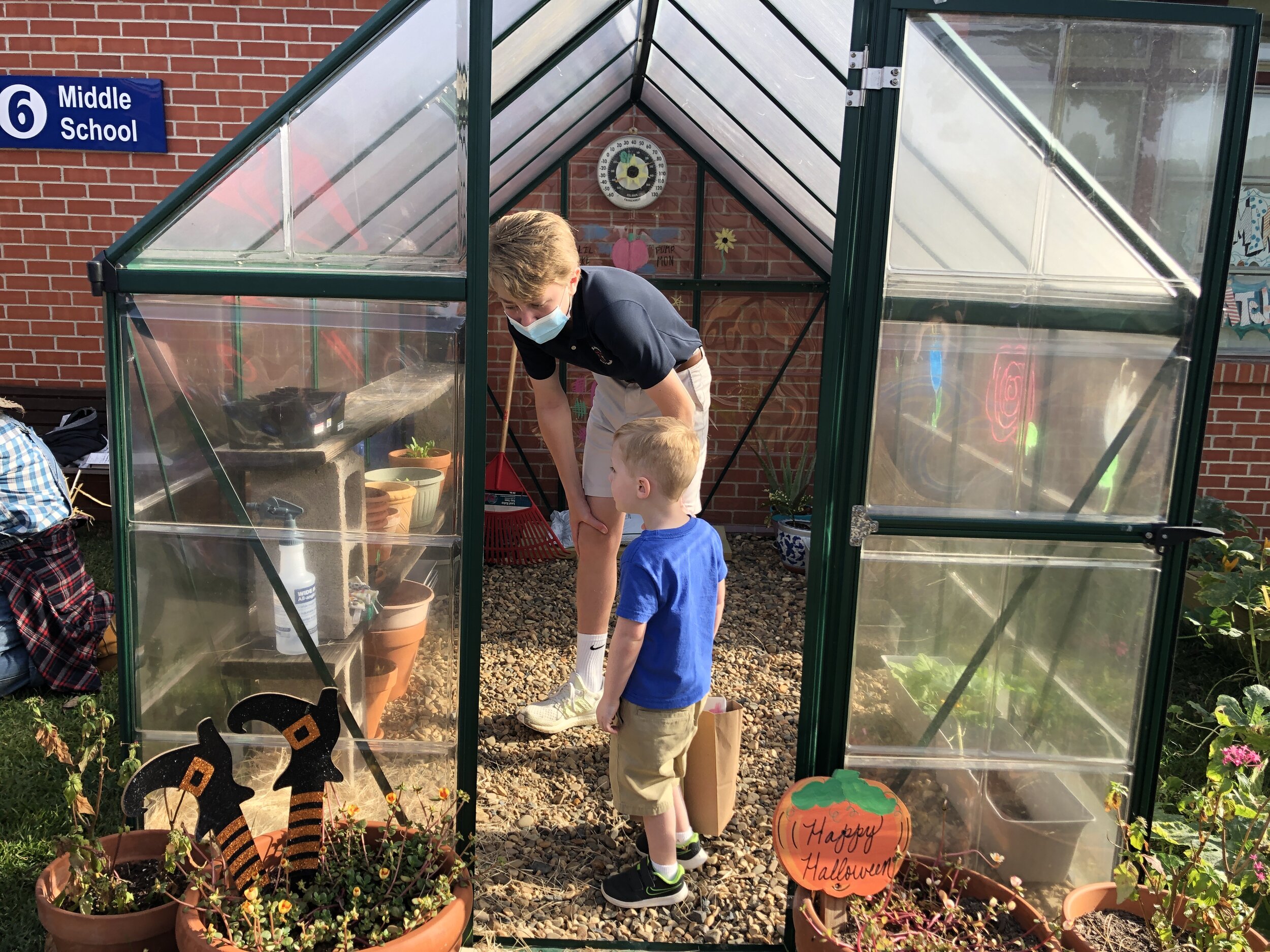
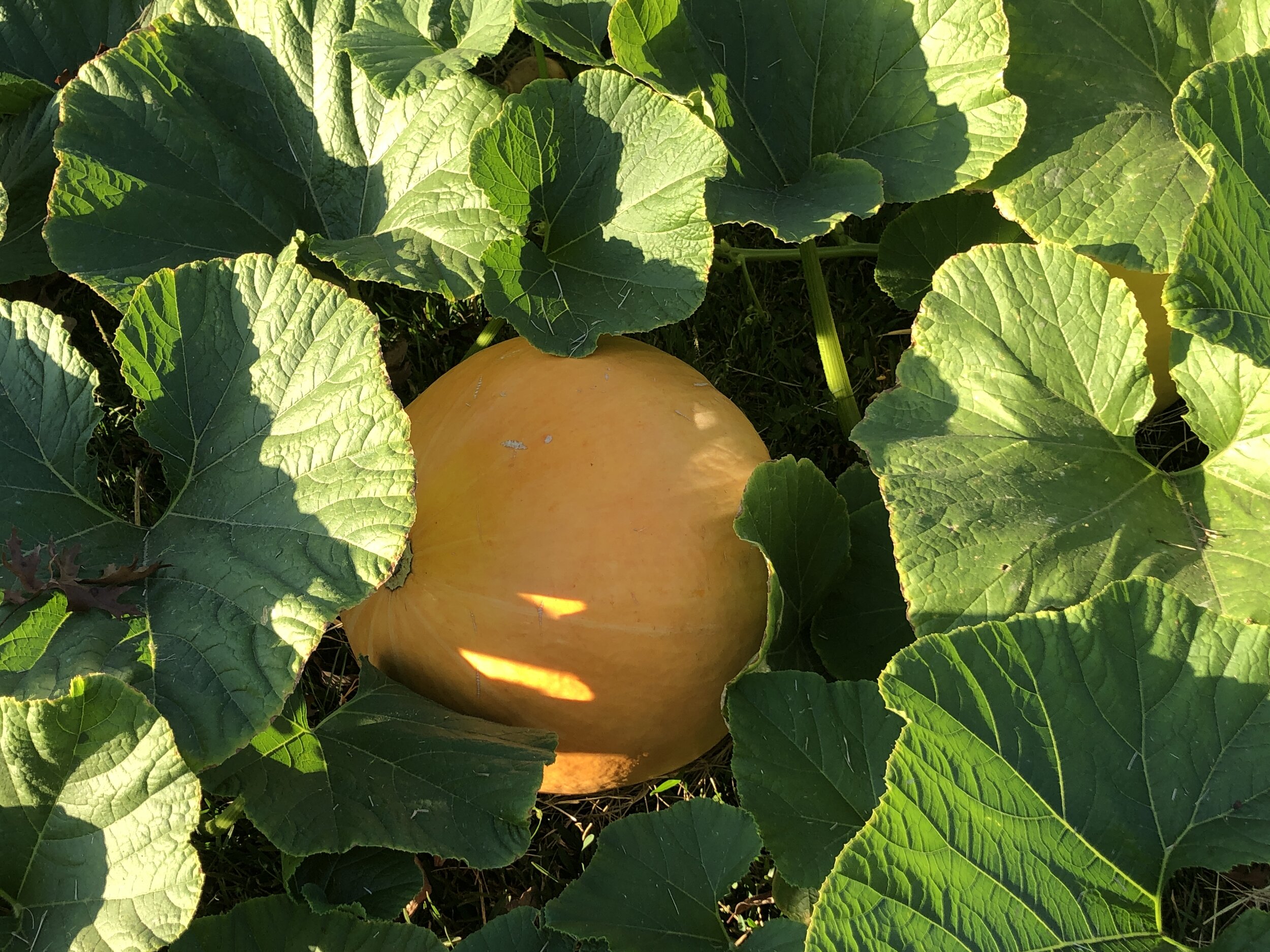
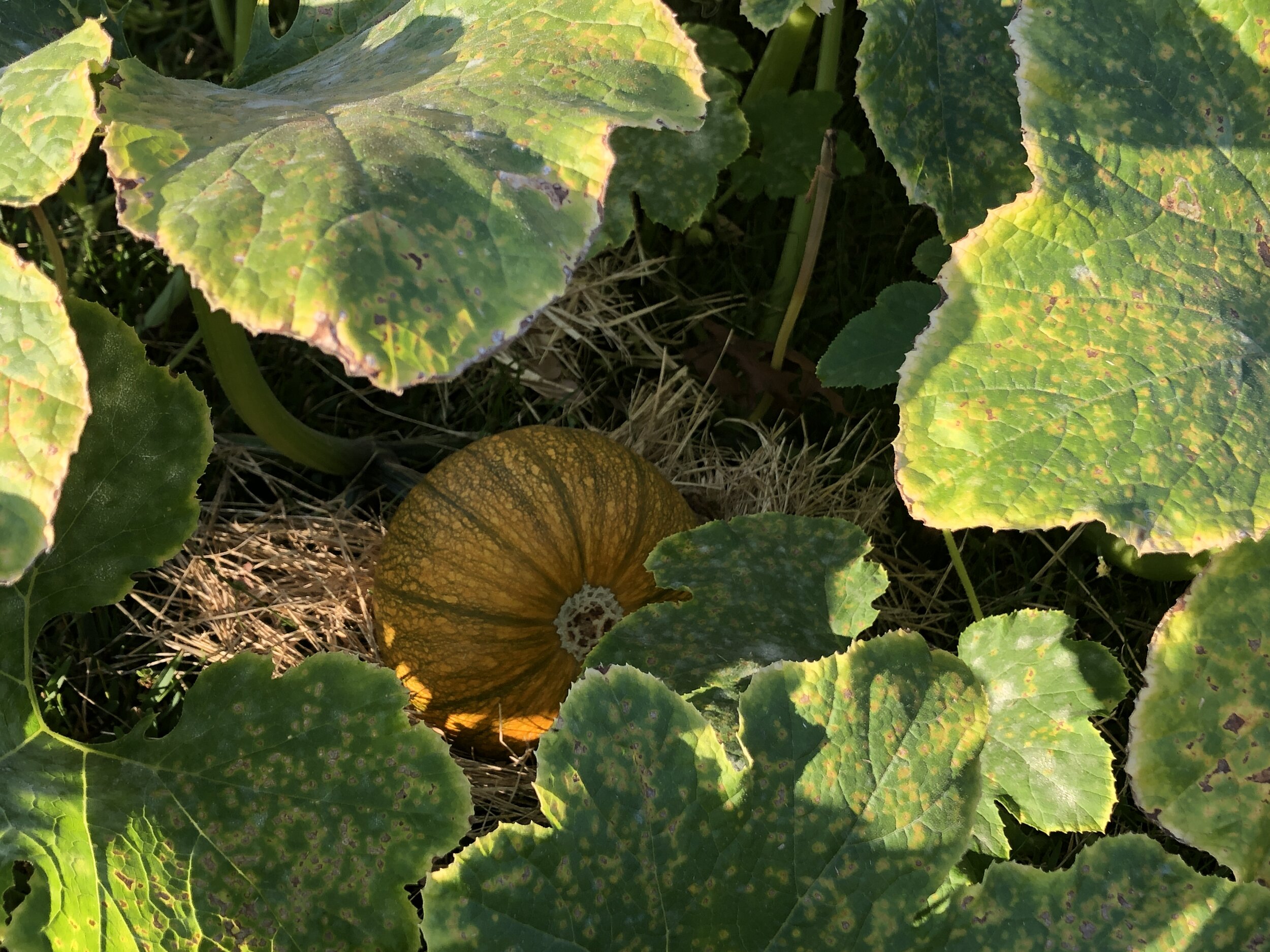
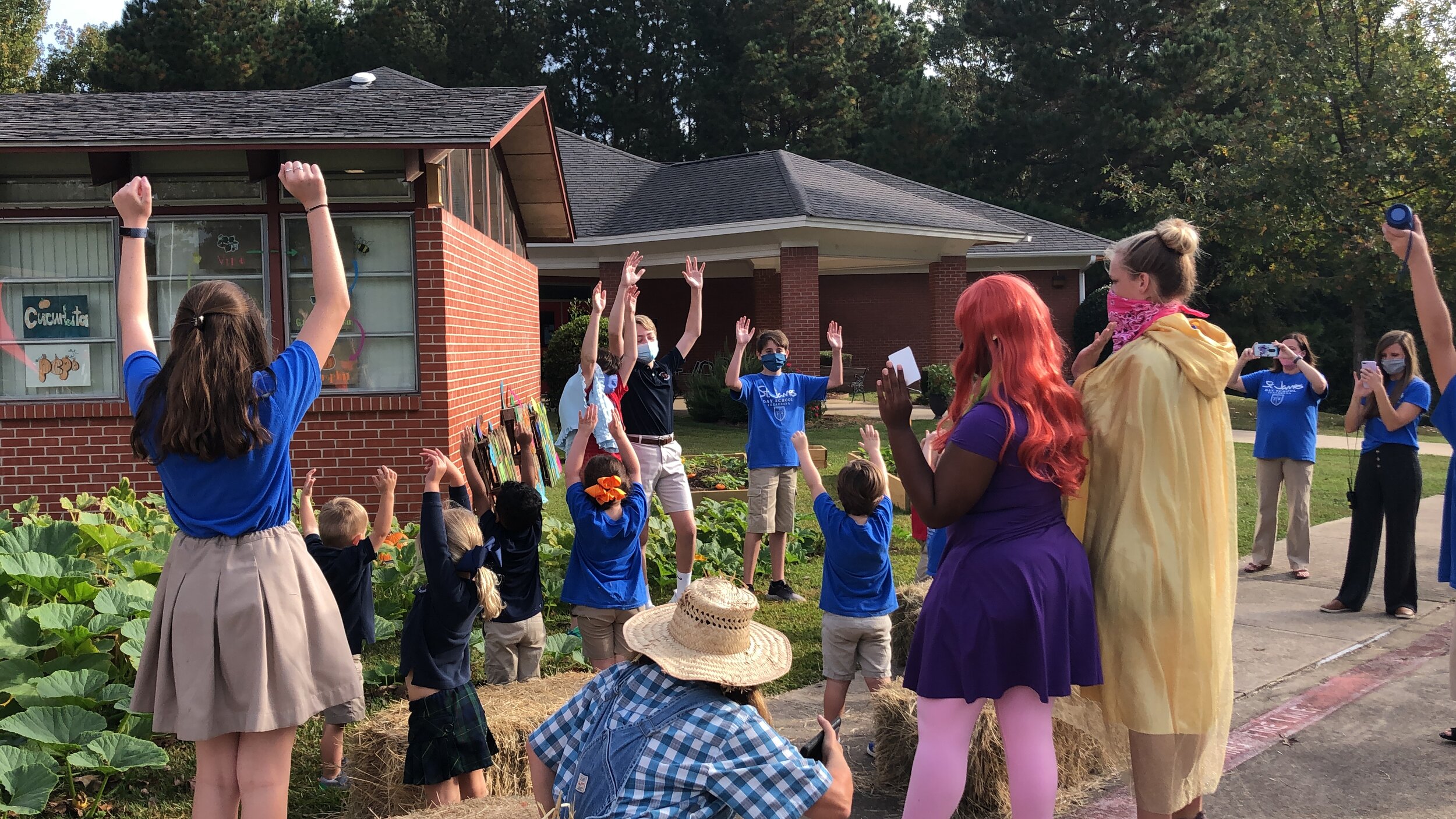
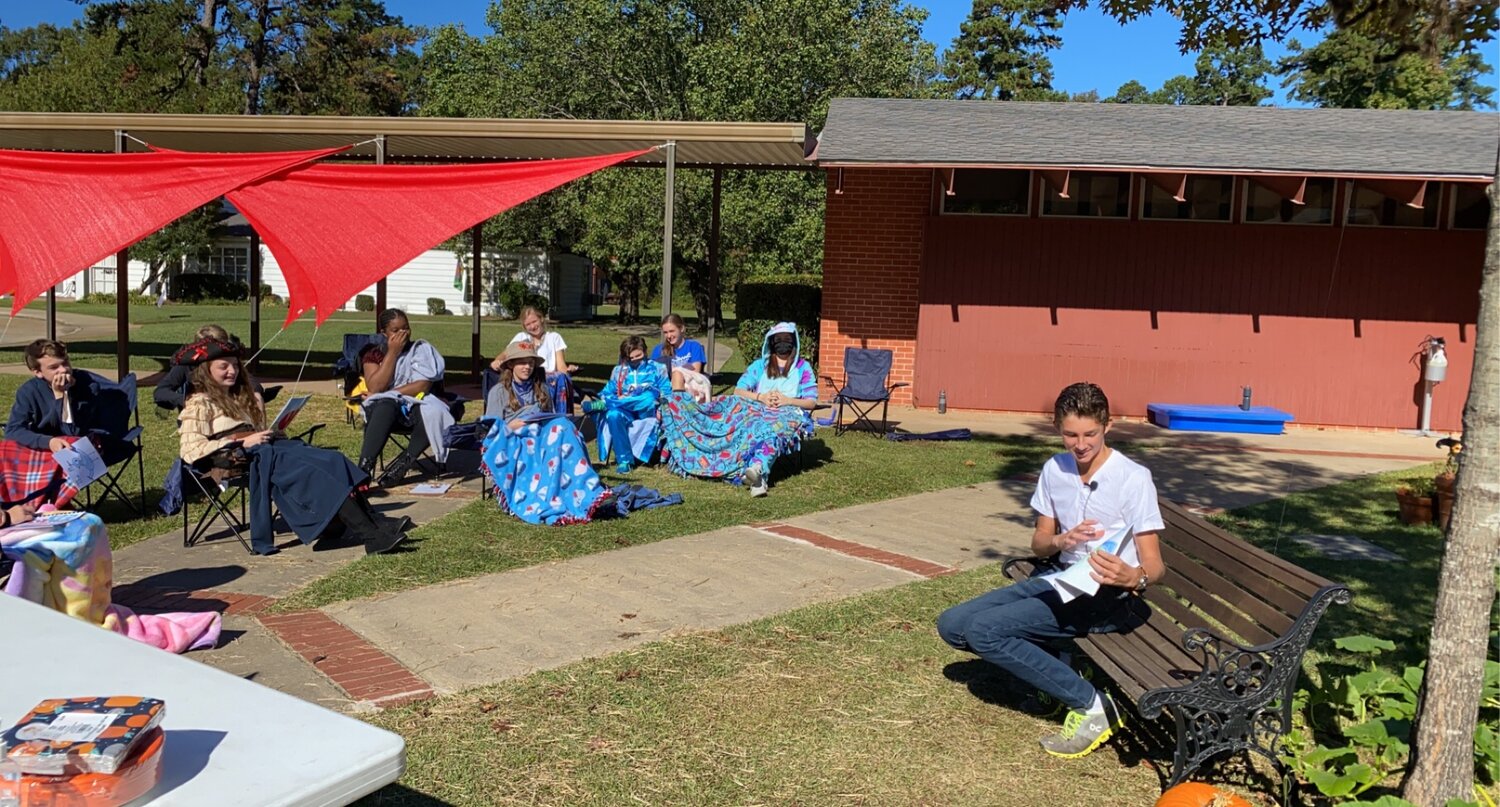
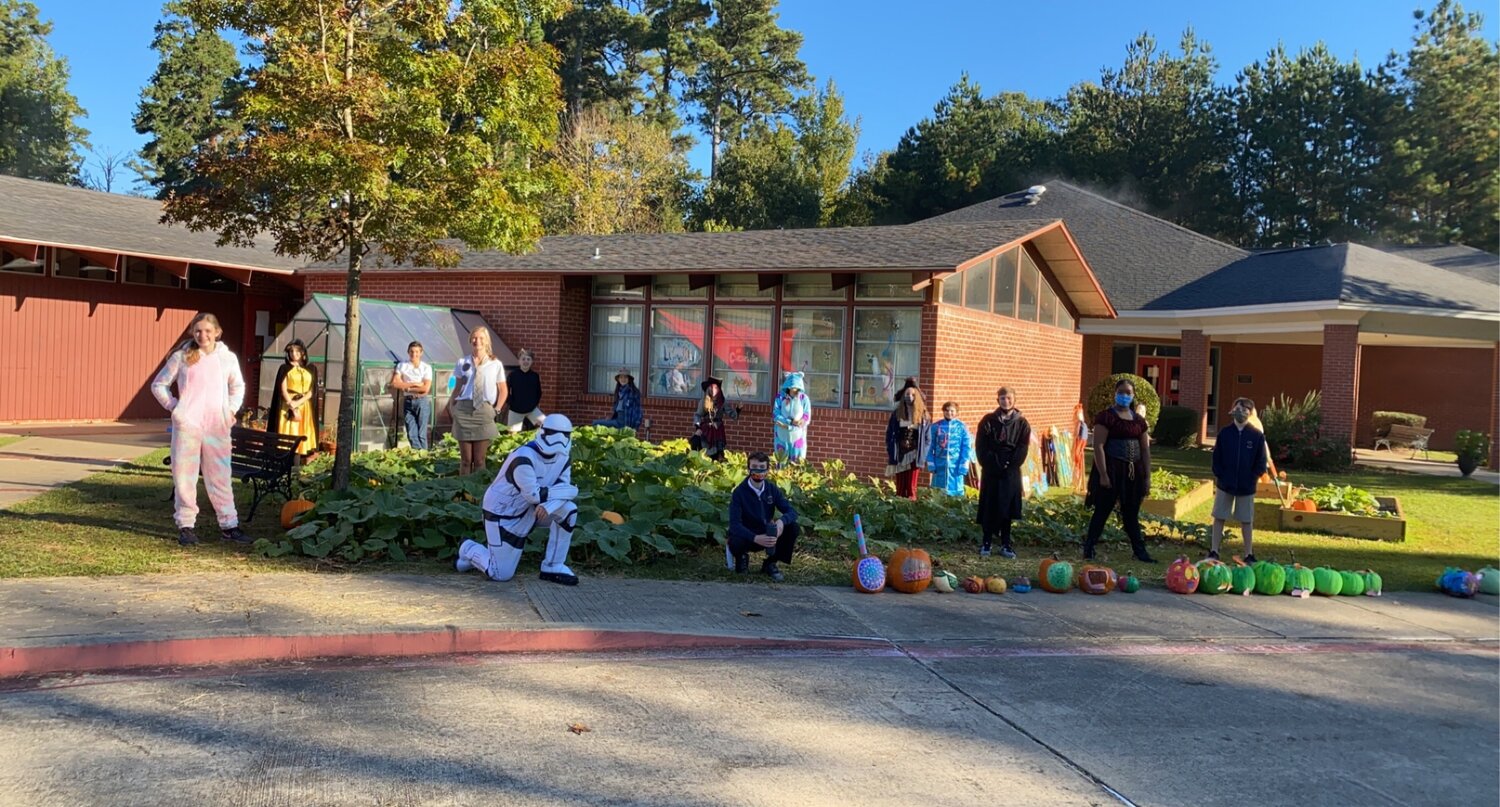
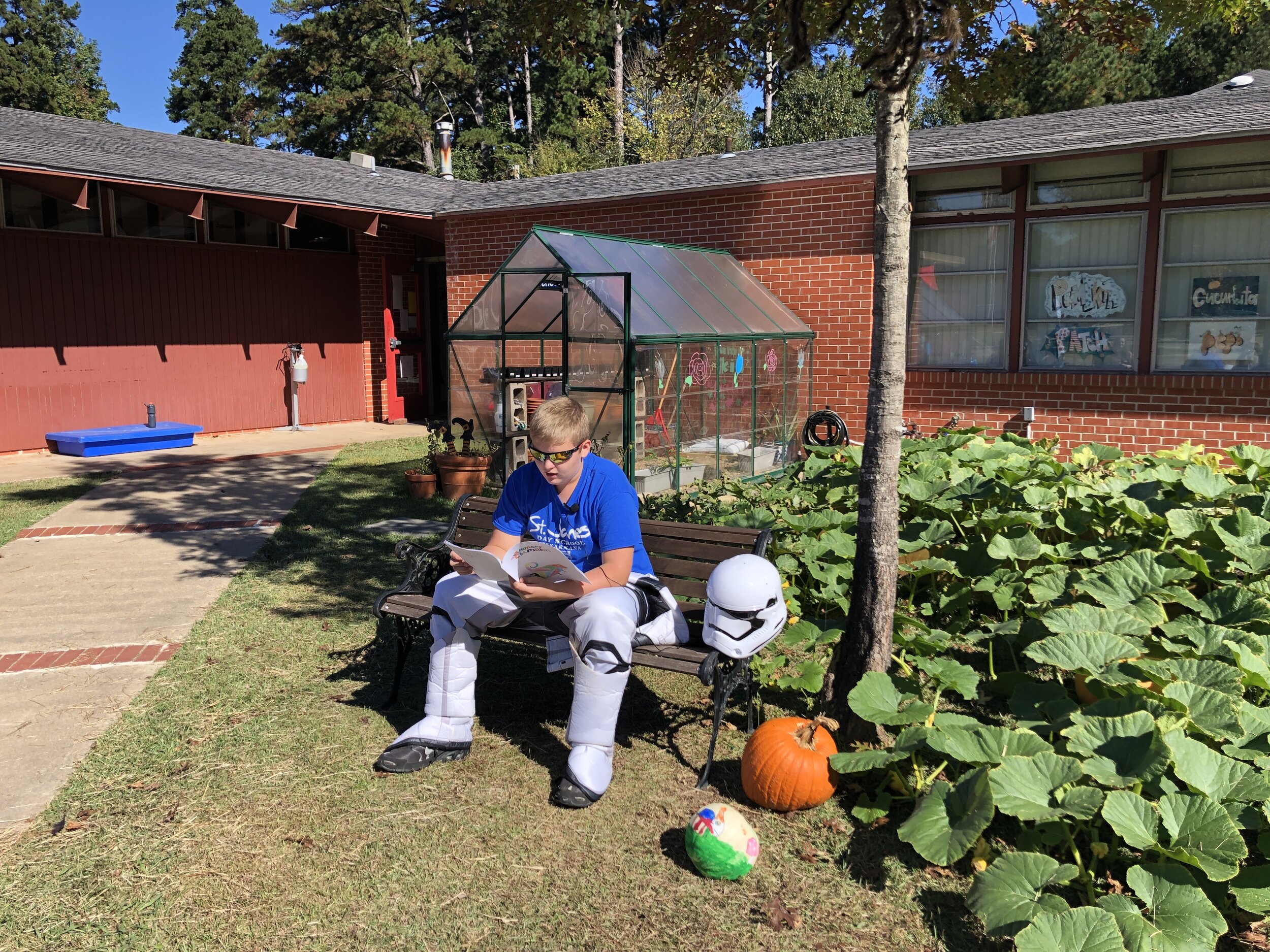
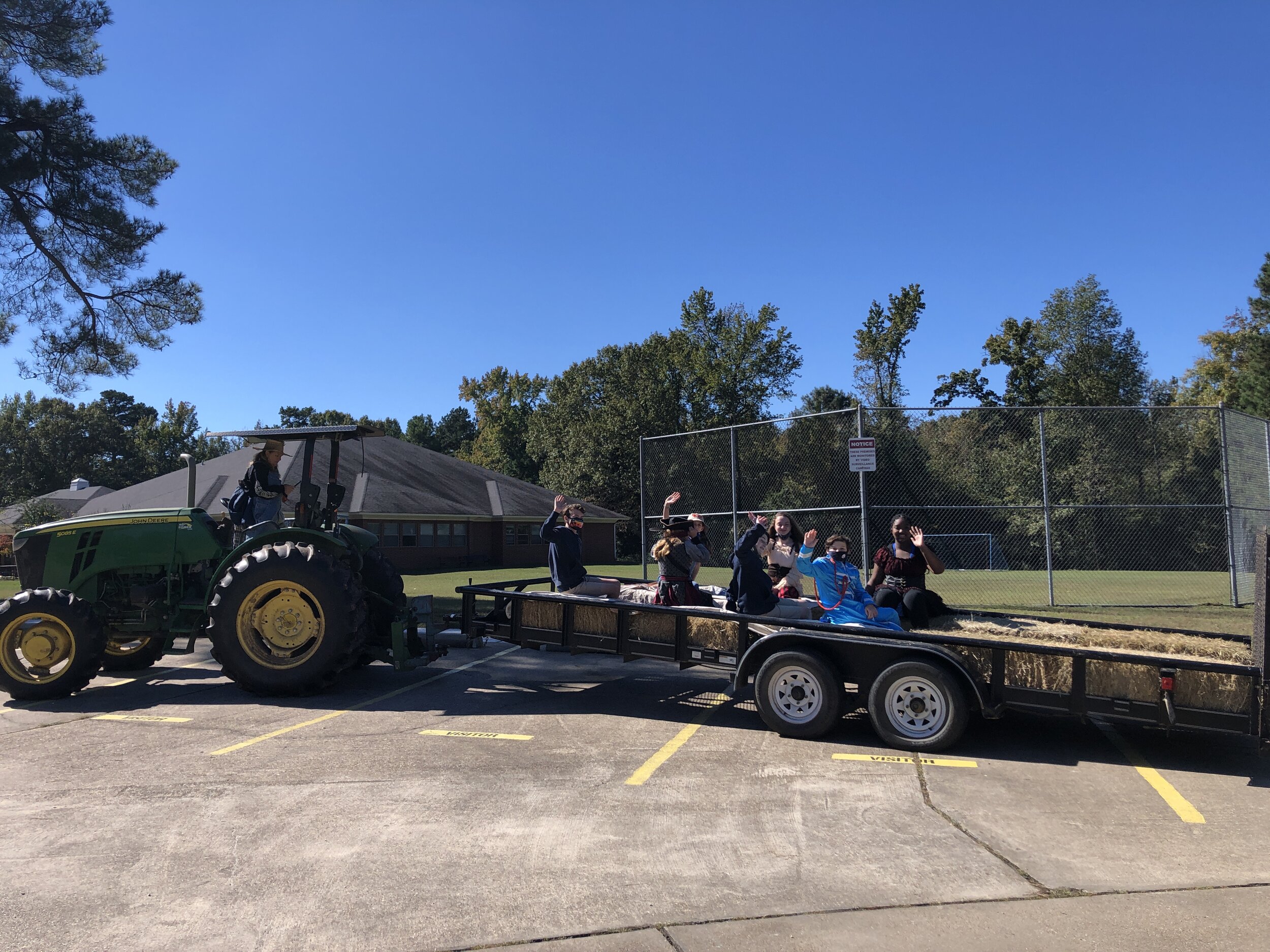
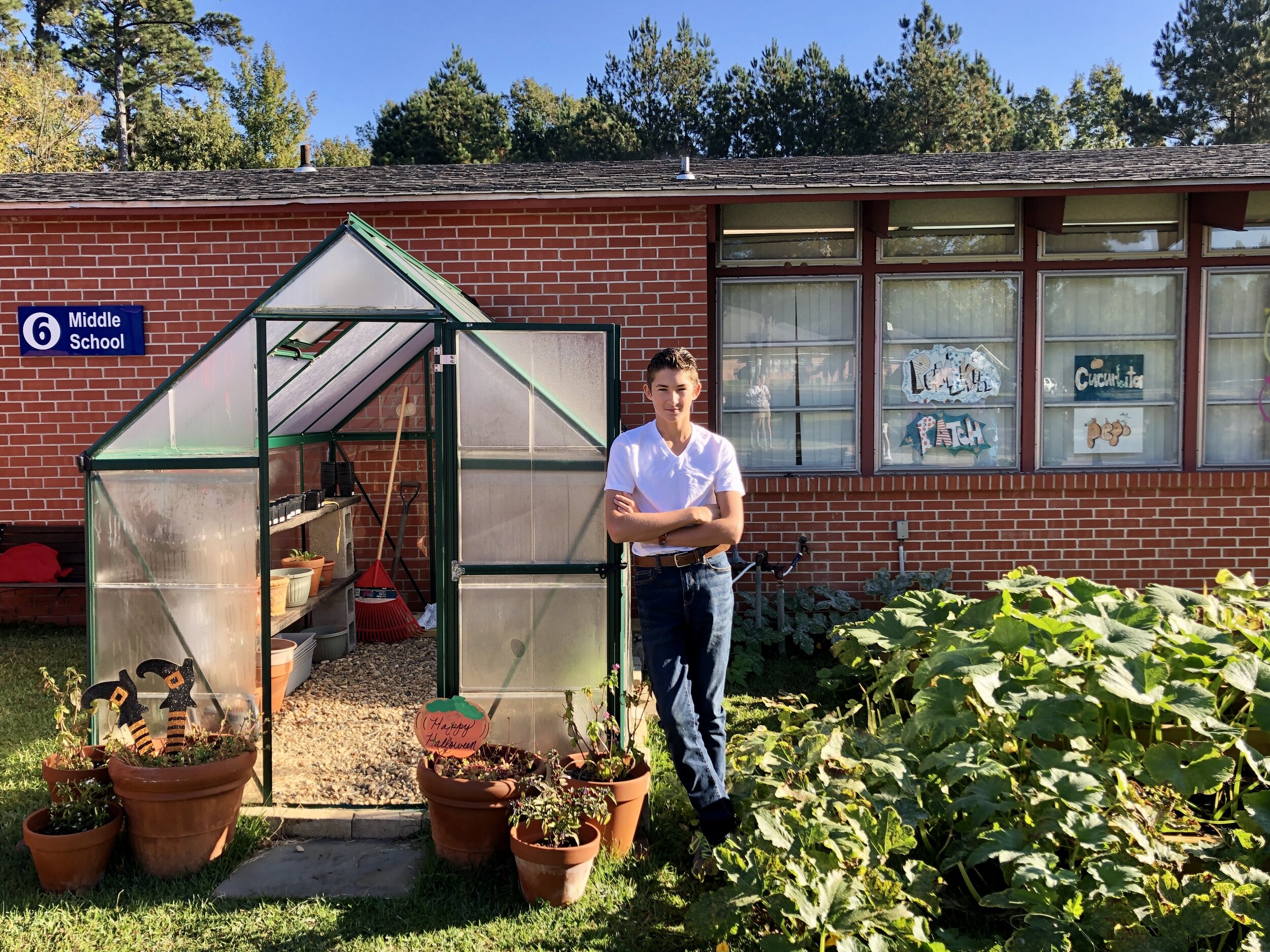
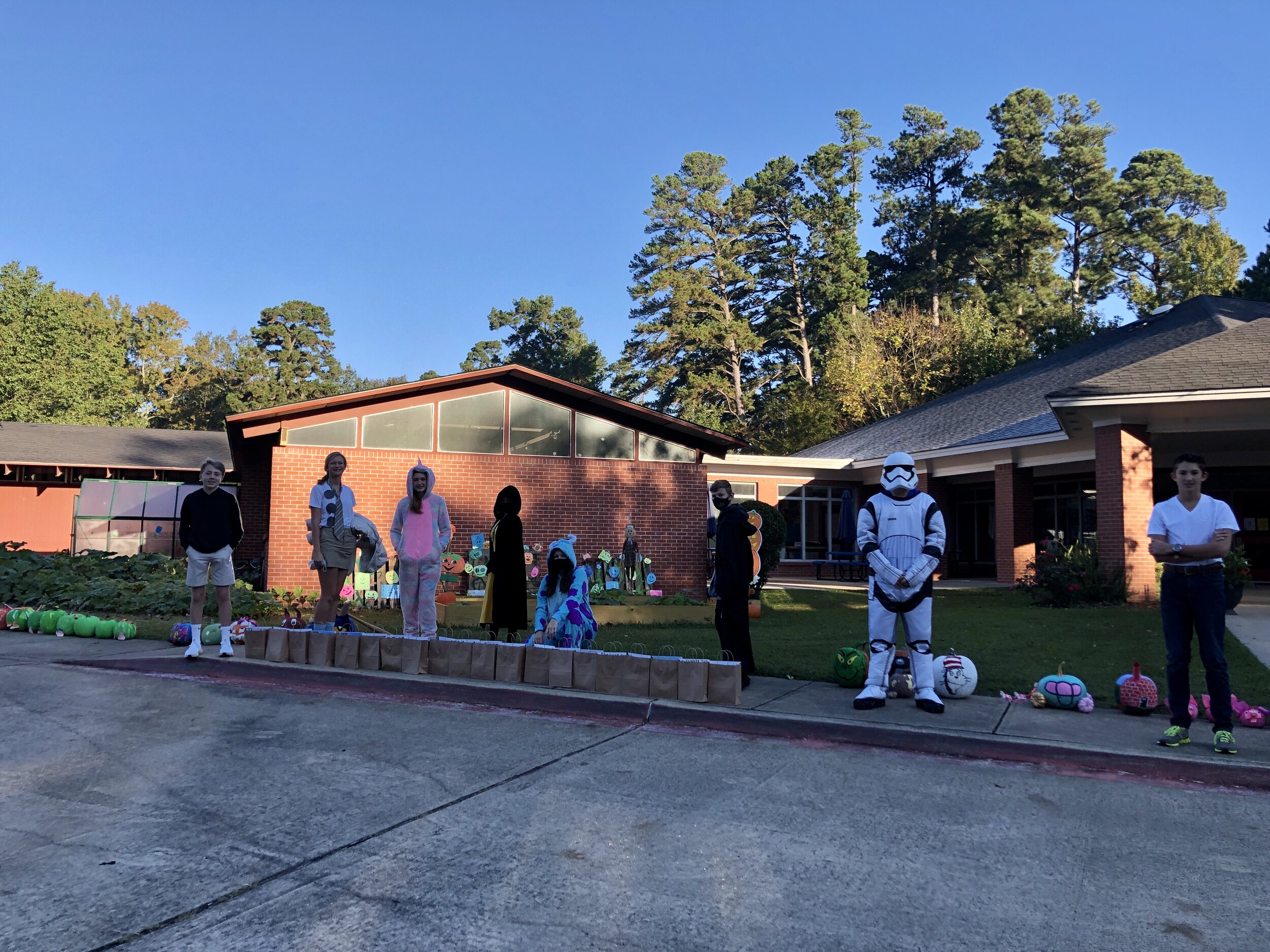

To expand on the science experience, English, art, and technology were also incorporated. The students each painted a pumpkin and created an original short story starring their pumpkin. Students reviewed the elements of a short story, completed a storyboard, and then wrote and illustrated their story. Copies were made and laminated and given to the preschool students along with a pumpkin that they “picked” from the patch at the end of their excursion. On the beautiful sunny Friday, Mrs. Denise transported each class on a hayride to their field trip where the children were greeted with fun Halloween music, silly dancing, storytime, and seed planting with 7th and 8th graders dressed in costumes. Each middle school student gave their preschool buddy a tour of the pumpkin patch explaining the life cycle and showing them the growing pumpkins underneath the masses of vines, had them pick a pumpkin to take home, and read their own original story. The middle school students also recorded and videoed themselves reading their stories so that everyone could enjoy them anytime. When students work together, priceless learning experiences are made.
